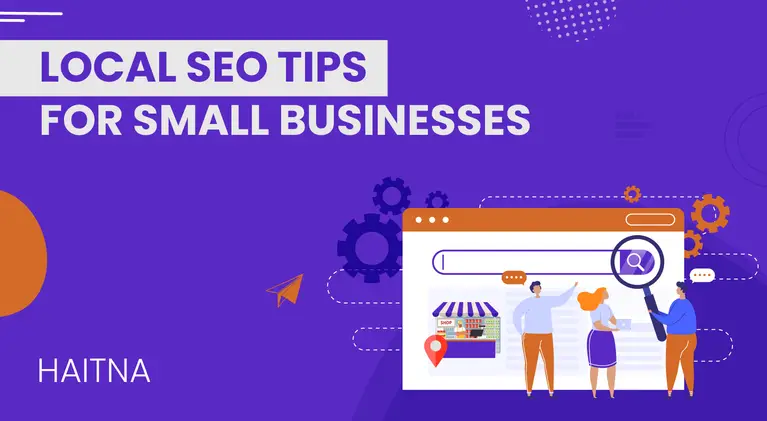
Tips to Rank Your Small Businesses Using Local SEO
14 Local SEO Tips for Small Businesses
Did you know?
93% of consumers find a local business through the Internet?
And 78% of local searches through mobile take customers for an in-store purchase?
No wonder small businesses are making the smart move and opting for local SEO.
When someone enters a search like bakeries near me or gift shops, this is a local search. But having a website doesn’t mean you will be seen. To make your site visible is through search engine optimization (SEO).
Do you want to get your local SEO thriving and outshining your competitors with it? Here are 14 local SEO tips to boost any small business.
1. Show You are a Local Business
Show your customers and the search crawlers that you are local. Get a local phone number with the area code of the market. If you don’t have a local phone number, go for Google Voice.
Clearly show your business’s name, address, and phone number on your website. This information about your business is called NAP - name, address, phone number in SEO. This is an amazing approach to localizing your business and drawing search engines and customers to it.
With these techniques, you can make your website localization relevant, which:
- Helps search engine crawlers to reach your website
- Provides localized relevancy to users who visit your page
Highlight that you are a local business in creative ways. For example –
Add the name of your city in your caption, such as “The best mattress in Dallas”. You can also add it to your website content through localized pages and categories.
Here’s an example of a business displaying critical NAP details:
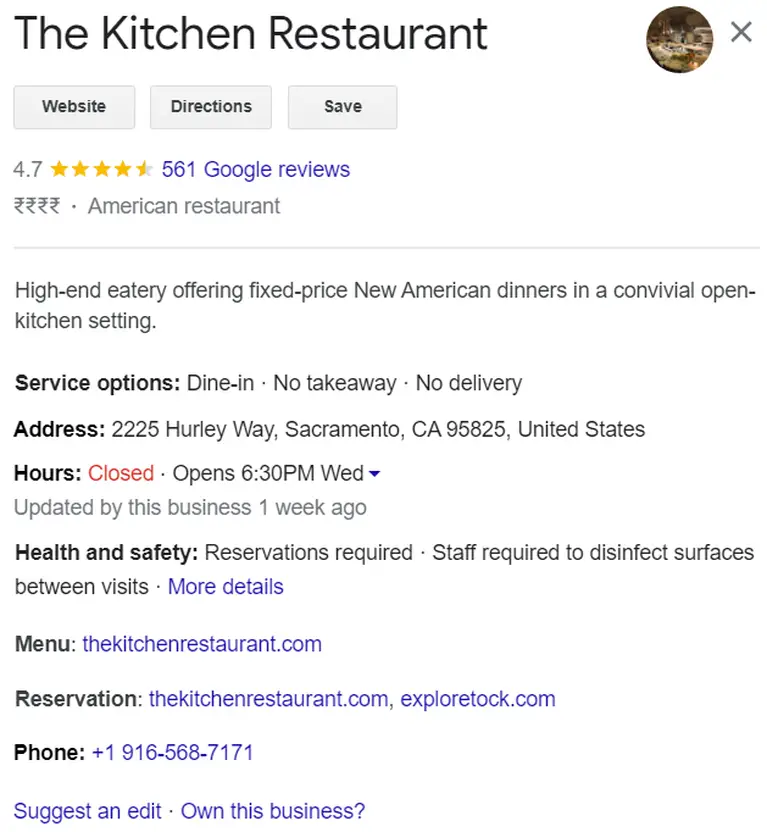
2. Create Your Space on The Local Places Page
If you want to optimize your business for local search, you must have:
- Google My Business (GMB) Account
- Bing Places for Business
It provides information about your website.
For example - The team at SEMrush created a Google My Business guide. It helped in claiming their address and setting up.
Once you set up, you have taken the first step. To keep your listing up-to-date and useful, follow the tips below -
- Reply to the comments or questions of your customers.
- Frequently audit your account. Once every three months, review your GMB and Bing Places.
- Stay on top of new features. For example, Google regularly adds attributes to boost your business profile.
- You can take any other local business profiles relevant to your industry, such as Yelp. The more platforms you use, the better your local footprint you get.
Here’s a screenshot of what a GMB account looks like:
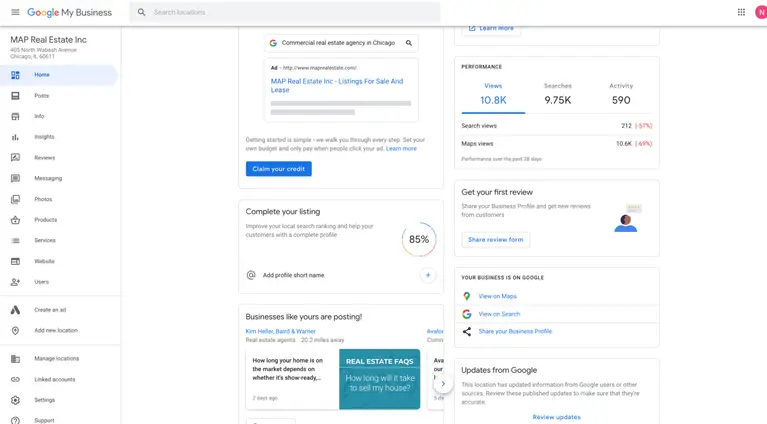
3. Target Local Keywords
Let search engines know who you are and what you do. To target local terms on Google:
- Let their website crawlers know about your small business in a specific area
- Check your content and see if you are using the correct keywords: Shoe shops in Michigan, bakeries near me, and local eateries.
And what’s good? You need not guess the best keywords to use. There is no shortage of free resources to help you guide in keyword research. To get hold of more advanced features, you can also invest in paid tools.
Here’s a screenshot of Google’s Keyword Planner showing local keywords:

4. Infuse Local Terms Into Your Meta Tags
You can increase your visibility with SEO options for your website. Add SEO information in the tabs within Squarespace before publishing a post or page.
For example - WordPress users can benefit from Yoast, which offers a free widget to target specific keywords.
The two important SEO terms you will encounter are Meta titles and Meta descriptions. Both are significant sources to inform search engines of what content is all about. And the correct keywords will help you rank locally well.
Smartly add keywords to your Meta titles and descriptions. With SEO tools, you can get tips like how long a Meta description should be and the placement of keywords to enhance your content.
Here’s a screenshot showing what a meta title and meta description are:

5. Encourage Link Building
The Internet is a web of connections. Billions of websites are interlinking with each other. This network of links is among the most significant parts of SEO. It reaches search engines through signals.
You can encourage link building in several ways. Your online visibility is enhanced when you link your website with other relevant websites and vice-versa.
This indirectly declares the credibility of your website. As relevant links to your website increase, search engines review your business as authentic and improve your search rankings.
For example, you can use the power of social media sites (Facebook, Twitter, Instagram) to share links to your website. When the content is useful and relevant, it spreads widely.
Here’s an example of a brand using Instagram to share a link to its website:

6. Focus on User Behavior
Real-life factors affect consumers and their search trends. The pandemic is the best example of this trend.
For example, in 2020, searches related to home improvement and DIY things increased. Also, globally, searches with “low budget” increased to more than 200% every year.
Google regularly updates insights on user behavior. To understand what your users need, follow these insights. This helps you target significant keywords and understand the requirement of people buying services/products from you.
Here’s a screenshot of Google Analytics showing user behavior insights:
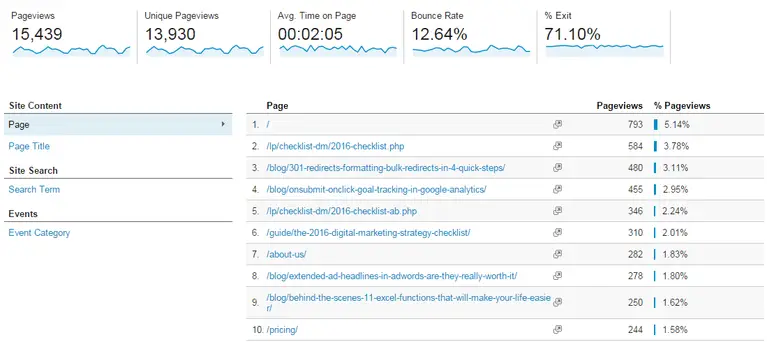
7. Keep the Consumer at the Heart of Your Local SEO Efforts
Getting caught up in the technicalities of SEO is easy, but know that your purpose is not to beat Google or other search engines. Your efforts are targeted to connect with your customers. Search engines always aim at providing the most relevant results to their users.
So, the best long-term strategy for local SEO is to focus on providing relevant results to users. But make sure that the relevance you provide is closest to the best possible extent.
To do so, you need not excel in search engine algorithms. You can create positive customer experiences by focusing on your customers' problems.
Tip: Brainstorm how you can address the pain points of your customers. By doing so, you can get effectively noticed.
Here’s an example of a business displaying relevant search results in response to a user query:

Read: 17 Awesome Local SEO Experts to Follow
8. Manage Local Business Listings
You can promote your products and services better if you have accurate data about your business. Data aggregators share information about local businesses. This information includes –
- Name
- Address
- Phone number
This ensures that you provide them with the exact information and maintain stability. It is instrumental in taking your business to the next level. Your services/products will also reach local prospects and customers.
Local data aggregators mostly use local search results to collect such information. The search results depend on local content, links, social profile pages, and citations. The most accurate and relevant local results are provided to a potential customer or user.
Tip: Sign up for a competent service for maintaining local citations and directories. This helps in boosting your local presence.
Here’s a screenshot of SEMrush’s listing management tool:

9. Engage with Local Small Businesses
As a local business, you should seek interlinking opportunities within your community. Ensure that the websites you are interlinking with are relevant to your industry and location.
For example:
- Connect with local newspapers to cover any event that you are organizing. Newspapers and other online publications can link to your website, and you can return the favor.
- Get engaged with the local community. As these groups sponsor events and organizations, you might get a link back for your website.
- Write blog posts about local news, stories, and events in your area. You can link to other local blogs and businesses.
- Fix any broken links on your website. Once you are confident with creating internal and external links, proceed to more advanced link-building strategies to boost your local SEO.
You can detect broken links on your website using the Online Broken Link Checker:

Read: Importance of SEO for Small Businesses
10. Optimize Your Website
Optimize your website. It represents you as well as your service/product. So, optimizing your online presence is imperative in improving your search rankings. Select a domain name that explains your business and tells your location. This helps in displaying your business in the centroid of maps.
Follow the steps below to stand out:
- Use tools like Google Ads, Moz Keyword Explorer, or Ahrefs. You can filter out the most widely used local keywords and incorporate them into your website.
- Conduct an SEO audit. Find the right keyword density for specific local keywords and keyword phrases.
- Emphasize meta tags and descriptions. Keep them short and crisp. Ensure to keep the title 50-70 characters long and descriptions within 160 characters.
- Displaying featured snippets helps drive traffic to your website.
- Understand the power of pictures. Add high-quality images relevant to your business content.
Here’s a screenshot of Moz Keyword Explorer:

11. Generate Online Reviews
It is important to give space to customer reviews on your website. This helps expand the reach of your business. It further increases your online visibility.
Incorporate aspects like a web button that helps your customers submit their reviews about your product/service. Also, interact with your customers by:
- Actively engage with them through comments and tags on your social media platforms
- Encouraging them to comment
- Increasing mentions about your business on social media platforms
These steps will boost the search rankings of your business on the local search results pages.
Several search engines, such as Google, take customer reviews seriously. These reviews are considered important determinants to list businesses that rank on top. Positive reviews about your company earn you more users/customers.
When you get negative reviews, try to communicate with your customers. Identify what and why they found worth criticizing. Be proactive in working on your shortcomings. And the next time, the customers who have left negative reviews will leave a positive one.
Tip: Know that every customer is not a tech whiz. So, share a nice and simple review handout at the time of service. They can post their review later.
Here’s an example of a business on Instagram encouraging its followers to comment on a post:

12. Go Mobile
The use of smartphones is increasing day by day. And so are the users of smartphones. According to a report, almost 60% of search queries are generated from mobile devices. So, it is prudent to make your website mobile compatible. Optimize it well to function as perfectly on smartphones and tablets as on laptops.
This will increase the reach of your business website to a larger community of mobile devices users. And you will gain an upper hand edge over your competitors in the local market.
Tip: To provide the best user experience, make your website responsive. So, it adapts to the user’s screen or is particularly designed for mobile users.
You can check if your website is mobile-friend using this tool:

13. Go for Competitor Analysis
Be aware of your competitors and what they are doing. Do a competitive analysis to stay ahead of the game. Pay special attention to the top 5-10 websites on Google search that comprise your target keywords. It is important for SEO purposes and business needs.
When conducting a competitive analysis, remember the following:
- Where and your competitors’ sites ranking, and for which reason?
- What is the number of pages they have indexed?
- What is the structure of their website like?
- What is their backlink profile quality?
- What is the page loading speed of their landing pages?
These essential aspects help determine your position in Google’s ranking algorithm. Analyze these aspects of your competitor’s website. Accordingly, apply these factors to your website. It will help improve your rank on Google’s search page.
Tip: Find and verify your online competitors from different sources. To do this, you can use tools or applications the manual approach. You can use tools like SEMRush.com, SPYFU.com, and Crunchbase.
Here’s a screenshot of SEMrush performing a competitor analysis:

14. Submit Your Website to Local Directories
A host of directories exist on the Internet. Many of these help people find local services. So, you should list your website in a directory.
Get yourself listed on reputed and trustworthy directories such as:
- Angie’s List (now Angi)
- Foursquare
- Bing Places
Also, look for business directories focused specifically on your region. This is instrumental in enhancing your search rankings. It also boosts the chances of new leads finding your business.
Tip: Make a few basic checks before submitting your website to a local directory. Make sure your site is complete. Fix all broken links. Check if it loads properly and quickly.
Here’s a screenshot of a business listing on Foursquare:
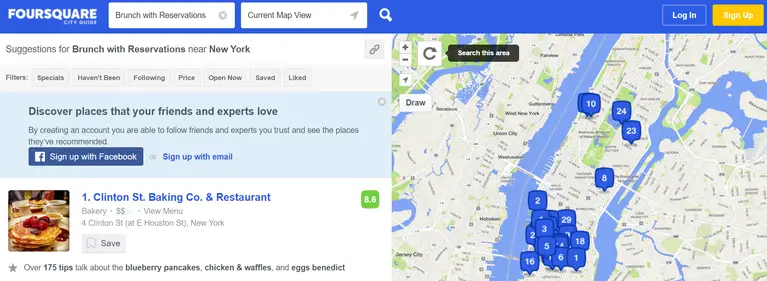
Key Takeaways
1. Show your customers and the Internet that you have a local business.
2. Optimize your business website for local search.
3. Add local terms and keywords to your meta title and meta description.
4. Take advantage of online local business directories.
5. Go for advanced link-building strategies.
6. Analyze your competitors to stay ahead.
7. Ask your customers to post their reviews on your website.
8. Engage with local small businesses and build interlinking.
9. Keep the customer at the core of your local SEO.
In a nutshell, local SEO optimization is a top priority in search engine optimization. You are prepared to rule the local online market with the tips above.
FAQs
What Are The Benefits Of Local SEO?
Local SEO efficiently promotes your business online. The benefits of local SEO are:
- Targeted market focus
- Directory listings
- Personal connections
- Better rankings
- Massive website traffic
- Higher conversion rates
What Is The Difference Between Local SEO And General SEO?
Here are some of the points that talk about the difference between local SEO and general SEO -
- Local SEO covers more than just SEO.
- General SEO focuses mainly on ranking the maximum possible pages for one keyword.
- You can do many things with general SEO, but those services aren't allowed on local services.
- Much more tools are available for general SEO than local SEO.
- There are ways of getting yourself de-indexed from GMB (Google My Business) and other business directories.
What Is The Importance Of Local SEO Strategies?
The importance of local strategies include:
- Local SEO strategies are important in several ways, such as:
- Local keywords rank higher in Google.
- Local SEO can drive more website traffic in the area.
- Local SEO can convert online searches into in-store purchases.
- Local search can target leads from mobile users.
ABOUT THE AUTHOR:
Brice Decker

Brice has been handling marketing projects for more than 12 years and he is providing consulting services on SEO, Social Media and PPC. He has a huge expertise in working at large corporations including Accenture Interactive & PwC Digital Services.
Related Post
Local SEO for Multiple Locations
Local SEO for Appliance Repair Companies
Local SEO for Pest Control Firms
Local SEO for Nonprofit Organizations
Local SEO for Roofing Contractors
Local SEO for Auto Repair Shops
Local SEO for Landscaping Companies
Local SEO for Personal Trainers
Local SEO for Ecommerce Websites
Local SEO for Enterprise Firms
Local SEO for Asphalt Paving Contractors
ABOUT THE AUTHOR:
Brice Decker

Brice has been handling marketing projects for more than 12 years and he is providing consulting services on SEO, Social Media and PPC. He has a huge expertise in working at large corporations including Accenture Interactive & PwC Digital Services.
Related Post
Local SEO for Multiple Locations
Local SEO for Appliance Repair Companies
Local SEO for Pest Control Firms
Local SEO for Nonprofit Organizations
Local SEO for Roofing Contractors
Local SEO for Auto Repair Shops
Local SEO for Landscaping Companies
Local SEO for Personal Trainers
Local SEO for Ecommerce Websites
Local SEO for Enterprise Firms
Local SEO for Asphalt Paving Contractors